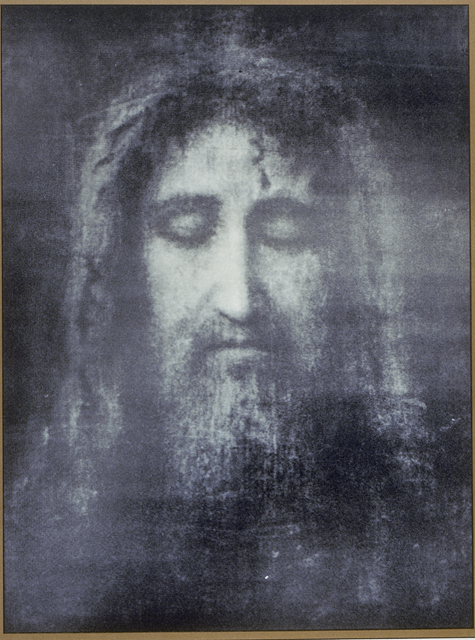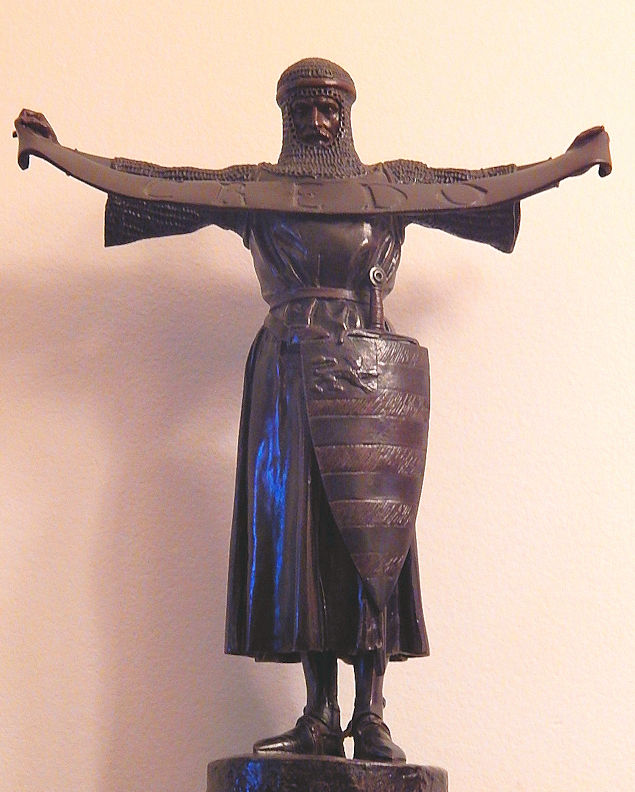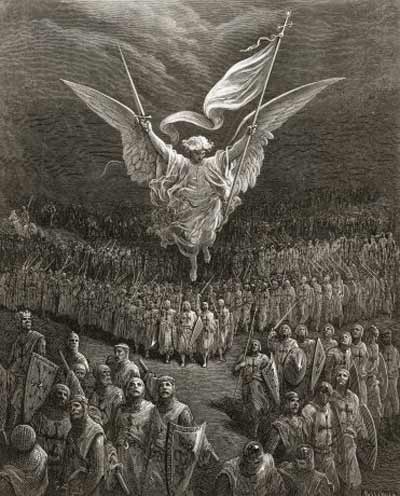By Plinio Corrêa de Oliveira
This issue is so holy that one feels like delving into it on one’s knees for fear of not dealing with it as one should; but in any case we can see something in this sense.
The point that radiates the beauty of chivalry is the idea that the Holy Sepulcher is being trampled upon, it is in the hands of Mohammedans – and therefore being profaned, vilified etc. – and it is necessary to fight with the drawn sword in order to make this abomination cease. Everybody knows this.
Now, the last point is that in the special grace the Crusaders received, the Holy Sepulcher appears to us – at least as I see it – in a light which is not the common light and above all not the light with which it is described by archeologists and scientists who have cared for and written about the Holy Sepulcher – or even today’s pilgrims. The Holy Sepulcher is considered sacred because of the Person of Our Lord Jesus Christ. So it is the very Person of Our Lord Jesus Christ that is considered almost present in the Holy Sepulcher, and being pierced with a lance, despised, and so forth.
But seen in this perspective, Our Lord Jesus Christ appears in a light that has something divine, with an essential elevation of which man catches a glimpse.

Cristo de Medina Coli: This statue is located high above the main altar in Madrid, Spain. He has real hair. This statue was in the possession of the Moors, since they stole Him. The Catholics wanted Him back, so the Moors put the statue on a scale & said the Catholics could buy Him back in the statue’s weight in gold. The friars put 30 pieces of gold on the scale & the scale balanced out. The Moors were furious (they wanted alot of gold, since the statue is very heavy), so they started fighting, but the Catholics won the battle & recovered the statue.
In other words, someone who in his own essence, in his own nature is ineffably high and elevated and at the same time has a unique dignity which has no parallel or comparison with anything; and Who in spite of this dignity has a sweetness like none other.
This near paradox of an immense elevation that nevertheless receives insult with meekness, makes the elevation shine with an even more special brilliance; a brilliance that belongs not merely to royal elevation. Indeed, because of its meekness this elevation shows a side whereby it is worthy of love, a side that mere grandeur does not have. It is elevation while deigning to incline downward with mercy, consenting to put itself on a level which is not its own, out of love for what is lower. And which, in spite of this kindness, is treated so brutally!
 What I find peculiar about this is, you may tell me, ‘but you will find this in any Way of the Cross.’ Not quite, not quite.
What I find peculiar about this is, you may tell me, ‘but you will find this in any Way of the Cross.’ Not quite, not quite.
The nature of this elevation is something that I think could be symbolized with a kind of … ineffably noble appearance, at the same time profoundly hurt by this injustice beyond all limits. This nobility, so to speak, this absolute transcendentalness is thus miserably wounded and has a hurt which is not wrath but a profound sadness, closed on itself, and which expands and manifests itself through meekness. This is another seeming paradox; for the manifestation of one who has suffered such an offense would not be but rather a hard kick and a curse. Not here. What you see is a profound hurt, unimaginably unjust, but which transpires sweetness; a sweetness, therefore, of a very special moral nature and physiognomy.

The entrance to the Tomb of Our Lord, the Holy Sepulchre, in the Church of the Holy Sepulchre, Jerusalem.
Yet this sweetness is conscious that it has been made to conquer. The sweetness itself knows that, before attracting, it moves and cracks the person who is open to it. And then it invites the one who allowed himself to be cracked, to have humility and contrition. And then, having attained his contrition and pardoned him, this sweetness conquers him. And this inaugurates an unheard-of form of conquest.
But in spite of all this that sweetness is brutally rejected!
At this point, what needs to be considered is this. The object of the crusader’s wrath is not the first sin, but the second one. It is the fact that, after sweetness had manifested itself so much, and conquered so much, there were still people who took their malice to the point of trampling all that underfoot; even worse, trampling on it in a definitive way. No sweetness will ever conquer them after that. And therefore, order needs to be reestablished at the tip of the sword! So, at that point combativeness gushes up like a geyser. Only with a gusher of steel!
(Excerpt from an MNF, Wednesday, Oct. 18, 1989 – Nobility.org translation)









